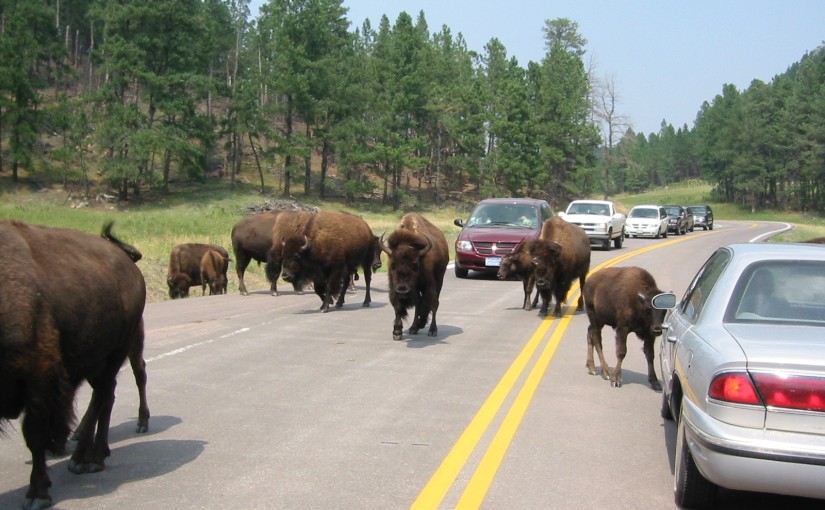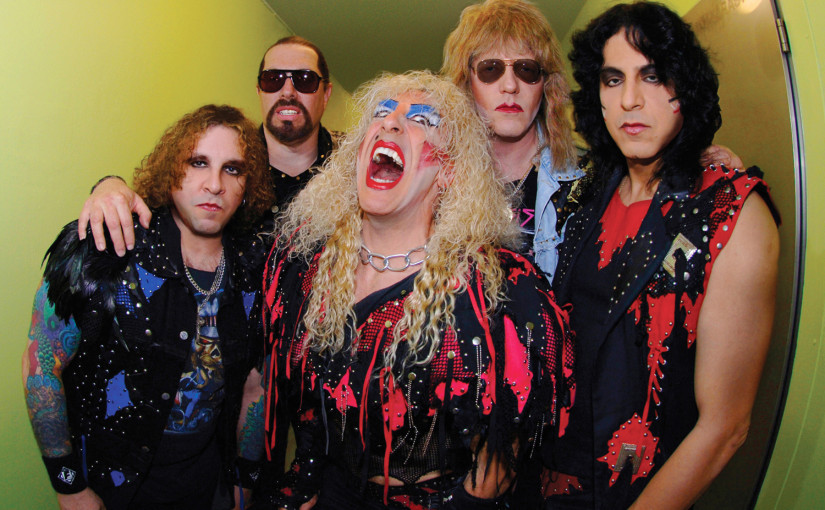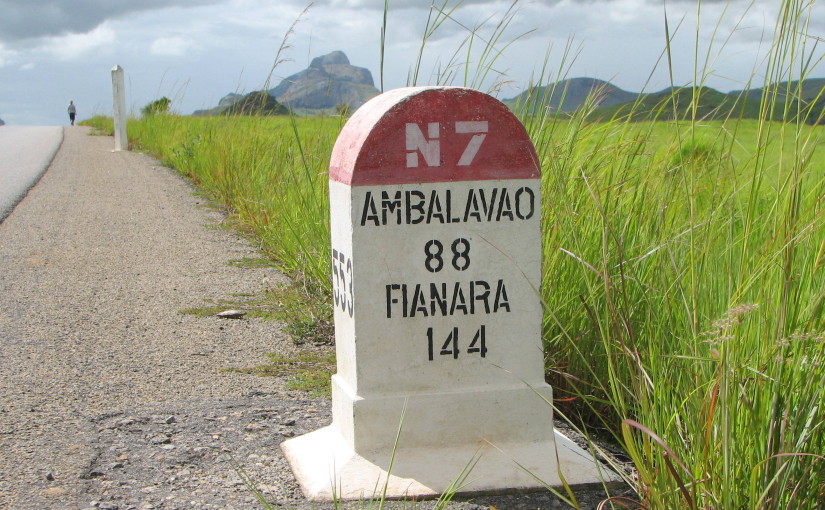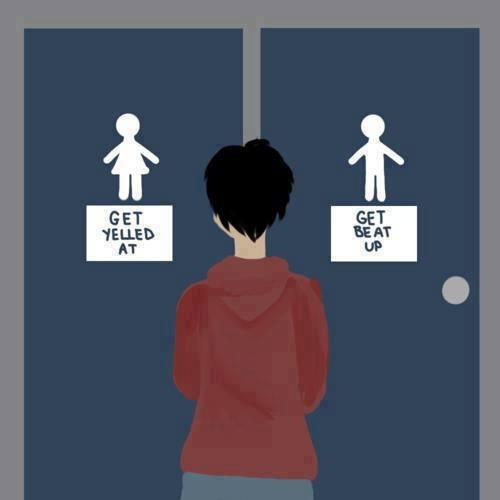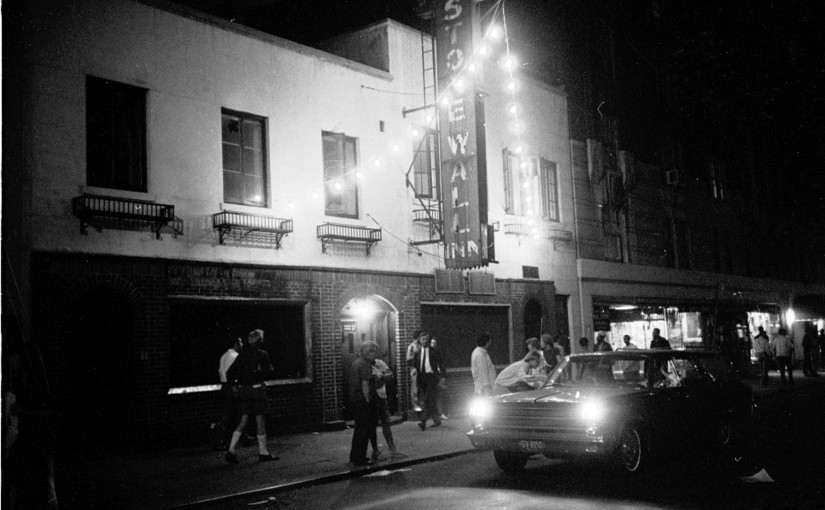Image credit Johnny Hart.
He pedaled directly to where I sat by the lake. He appeared to be seventy or so, and looked harmless enough. The trouble is that you can’t always tell.
Immediately I begin to flash through the inventory. Let’s see: I’m sitting down. Good. He can tell that I’m tall, but now how tall. Sunglasses cover my eyes and brows. Excellent. I happen to be wearing old men’s swim trunks, but they are very loud colors and paired with a swim shirt which offers no solid clues. I shaved yesterday. To me, it suddenly feels like a bumper crop of thistles, but from his side, it’s probably still blond enough. My fingernails are hot pink. Oh well, here goes nothing…
I told you that I reject the idea of passing. It’s time to clarify. I reject that I should have to appear feminine for the comfort of a binary world. I reject the idea that not passing makes me less of a woman than a transsexual who can pull it off or a natal female who doesn’t have to. I don’t owe anyone anything vis-a-vis my presentation except myself.
That said, being clocked every time I encounter a stranger is a lamentable pain in the ass-bone. It really doesn’t matter how many times you see someone’s face fall as they say, “Oh…”, or hear the “are you a man/woman” question. There is no graceful exit once the bottle is tipped. You’ve already got Awkward Sauce all over your new white shirt before you ever push away from the table. So, while I don’t owe anyone an inconspicuous cameo, I also admit that I can’t sustain the energy necessary to clean up the spill dozens of times per day. For my own sake, I learn to pick my spots.
In this case, I remain fascinated with the lake. I don’t turn to face him directly. I remember to smile as we make small talk and I tune in to his reactions as well as I can with my eyes elsewhere. I push my voice up from it’s normal residence in the center of my chest to the larynx. This raises the pitch a few notches, but not to Mickey Mouse levels. I turn down the volume and let the pitch bounce a little. It’s not to hard to break the monotone once you realize it’s there–something men rarely seem to do.
I feel deeply conflicted about vocal training. For one thing, I am a singer, and though not very good at it, I shudder to think of the loss of my vocal signature. Everyone has one. It is the permanent narrator of your thoughts, as familiar to you as your own face. Probably more. Second, I see vocal training as a concession along the same lines of visually passing. Indeed, voice is far more important in passing than appearance. There are many oceans left to navigate on my voyage, but the passage I dread the most at this point is the fact that some time soon I will have to figure out what to do with my voice. Meanwhile it’s just so damned easy to sound like me.
I know the basic principles of voice modulation. And, I would be a complete idiot if I didn’t cultivate the ability to sound plausible in a pinch. Today it was apparently optional. Another day my survival might depend on it.
Most of the time, “clocking” leads merely to mutual embarrassment. The person who reads me is often just as flustered as I am, or even more. They might never have experienced this before, whereas I am thoroughly practiced and cannot help but be a little numb. Still, it builds up. Whatever the stranger feels will only be felt this once, whereas my life is an endless repetition of such moments. And that’s the best case scenario.
Trans people need to develop a strategy for men. Personally, I don’t have much use for them. I am not attracted to them, and don’t seem to share many of their typical interests. I don’t care for my own smell, let alone their generally less disguised version. I was never any good at being one and I’ve noticed to my amusement that many of them are not especially good at it either. Only the flavor of our failure is different. Nevertheless, despite the wicked lie of my upbringing , I have to admit that the vast majority of them are really decent folk, and to channel Douglas Adams, Mostly Harmless.
Most encounters are therefore quite benign. On rare occasion, however, being transgender can be a death sentence. The flashpoint typically occurs when a man experiences sexual attraction to a trans person before the lightbulb goes on. In order for this to be truly dangerous, the guy has to be fairly unglued to start with. I have definitely seen guys get flustered when they are either making casual conversation or overtly hitting on me when they suddenly discern my unique origins. Almost all of them just want to go crawl into a hole somewhere. Some get rude. It is my great fortune to have never seen an outcome much worse than this. Nevertheless, trans people are murdered every year by guys whose sexual attraction morphs into uncontrollable rage.
The sunlight of public attention is just beginning to dawn on this situation, but the sharks are still circling in the water. The recent Supreme Court decision ends only one type of publicly-sanctioned discrimination against LGBT people. As I mentioned recently, it is still legal to fire people for being queer in 29 states. Attempts to rewrite public ordinances to allow transgender people the right to pee in the most comfortable restroom are routinely fought by people casting us as a threat to children. The DOD is spending six months investigating a solution, but I am still not eligible to serve openly in the military. When I go to the vendor areas at medical conferences, the military recruiters literally look down at the floor as I pass their booth.
Most of you probably find these things to be very sad. Further, you would be outraged to learn that “trans-panic” has been used with some success to assert innocence of violence against transsexuals and to reduce sentences for such crimes. The idea is that it is justifiable to attack someone who surprised you by being who they are. Many red states have been fighting like hell against hate crimes statutes and only now are losing out to superseding federal considerations. Let’s make it personal:
Try this thought experiment. Does a transsexual person have a duty to disclose himself/herself to a potential sex partner before making steps in that direction? Why? While the times are certainly a-changin’, exhaustive knowledge of private matters has never been a pre-condition for sexual activity. I challenge you to consider whether you believe that transsexuals must lay all their cards on the table in the way a “real man/woman” would not, and what this has to say about your value of transgender life. Of course one eventually needs to sort out the mechanics of it all, but the truth of the matter is that often identity disclosure often ends brings an evening to a screeching halt, and deep down inside you may have to admit that it would for you too. To be transgender is to be Less Than. Maybe a few laws are falling our way, but society still hates us, and won’t even concede the point.
Therefore we make do. There are several things we can do to be safe. One is to avoid being noticed at all. Trans people tend to be much more socially withdrawn. This, and not our gender identity itself, accounts for the mental illness which we undeniably and disproportionately suffer. Second, we can try to pass, or at the least make half-way adjustments aimed at soothing the bruised ego of the beholder . At the risk of beating a dead horse, we keep this option open not because of moral obligation but rather because it is simply in our best interests in a broken world. Defensive strategies often involve a combination of both. Fly below the radar whenever you can, even it would be more pleasant to be uninhibited and free. Third, make some friends–fast. Without people to watch your back, the target on it grows ever larger. Finally, learn to recognize the weirdos. Unfortunately this is an inexact science.
Today, however, the tale has a happy ending. Whether totally convinced or just pleasantly unconcerned, our cycling gentleman departed as amiably as he arrived. Heading off towards home, he called over his shoulder, “Have a wonderful day, my girl.”
